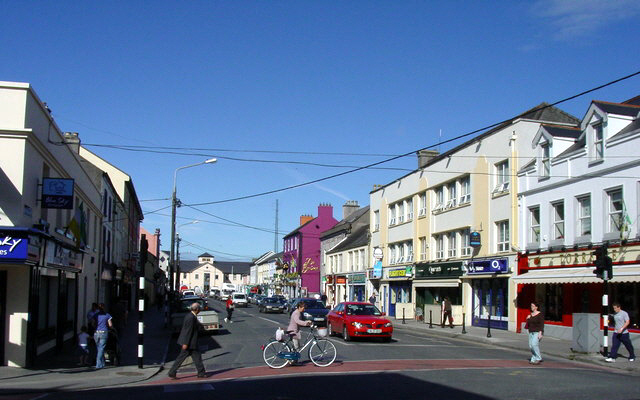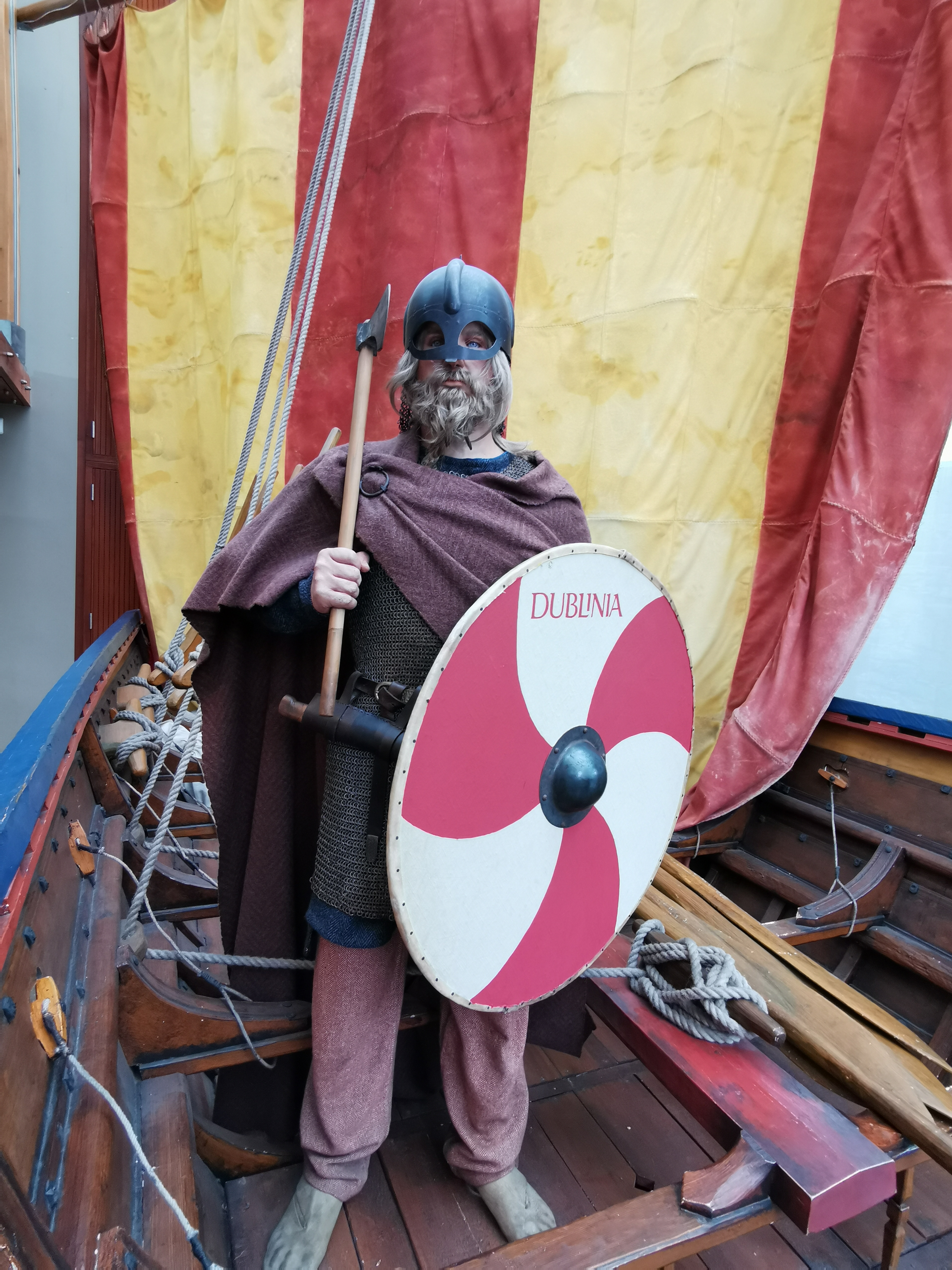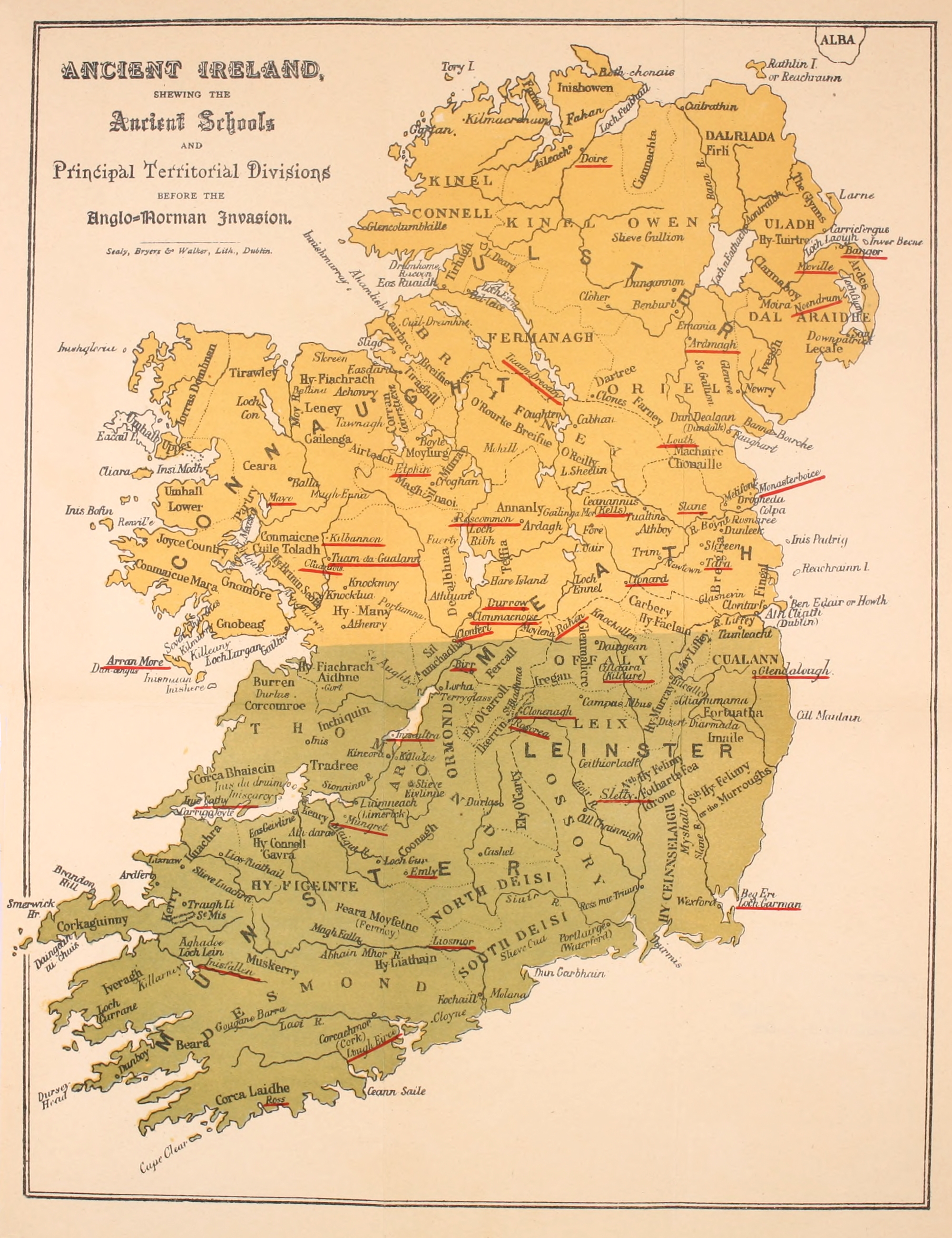|
Conn Cétchathach
Conn Cétchathach (), or Conn of the Hundred Battles, son of Fedlimid Rechtmar, was a legendary High King of Ireland who is claimed to be the ancestor of the Connachta, and through his descendant Niall Noígiallach, the Uí Néill dynasties, which dominated Ireland in the early Middle Ages. Literary tradition Early life and accession The ''Annals of the Four Masters'' says that five roads to Tara, which had never been seen before, were discovered on the night of Conn's birth. According to the '' Lebor Gabála Érenn'', he took power after killing his predecessor Cathair Mór. In other sources his predecessor is Dáire Doimthech. The '' Lia Fáil'', the coronation stone at Tara which was said to roar when the rightful king stood on it, roared under Conn for the first time since Cúchulainn split it with his sword when it failed to roar for Lugaid Riab nDerg. In the saga ''Baile in Scáil'' ("The Phantom's Ecstatic Vision"), Conn treads on the stone by accident while walki ... [...More Info...] [...Related Items...] OR: [Wikipedia] [Google] [Baidu] |
Fedlimid Rechtmar
Fedlimid Rechtmar (; "the lawful, legitimate" or "the passionate, furious") or Rechtaid ("the judge, lawgiver"), son of Tuathal Techtmar, was, according to medieval Irish legend and historical tradition, a High King of Ireland. His mother was Báine, daughter of Scál. He took power after killing his predecessor, and his father's killer, Mal mac Rochride. The chronology of Geoffrey Keating's ''Foras Feasa ar Éirinn'' dates his reign to 104–113, that of the ''Annals of the Four Masters'' to 110–119. The ''Lebor Gabála Érenn'' synchronises his reign with that of the Roman emperor Marcus Aurelius (161–180). He ruled for nine or ten years before dying in his bed, and was succeeded by Cathair Mór. One of his sons, Conn Cétchathach, would succeed Cathair. Two other sons, Fiacha Suighe, ancestor of the Dal Fiachrach Suighe, and Eochaid Finn, are named in medieval sources. He is said to have instituted the principle of an eye for an eye into Irish law, after which the behaviour ... [...More Info...] [...Related Items...] OR: [Wikipedia] [Google] [Baidu] |
Kuno Meyer
Kuno Meyer (20 December 1858 – 11 October 1919) was a German scholar, distinguished in the field of Celtic philology and literature. His pro-German stance at the start of World War I in the United States was a source of controversy. His brother was the distinguished classical scholar, Eduard Meyer. Meyer was considered first and foremost a lexicographer among Celtic scholars but is known by the general public in Ireland rather as the man who introduced them to ''Selections from Ancient Irish Poetry'' (1911). He founded and edited four journals devoted to Celtic Studies, published numerous texts and translations of Old and Middle Irish romances and sagas, and wrote prolifically, his topics ranging to name origins and ancient law. Early life Born in Hamburg, he studied there at the Gelehrtenschule of the Johanneum. He spent two years in Edinburgh, Scotland, as a teenager (1874–1876) learning English. From 1879, he attended the University of Leipzig, where he was taught Cel ... [...More Info...] [...Related Items...] OR: [Wikipedia] [Google] [Baidu] |
Kingdom Of Mide
Meath ( ; ; ) was a kingdom in Ireland from the 1st to the 12th century AD. Its name means "middle," denoting its location in the middle of the island. At its greatest extent, it included all of County Meath (which takes its name from the kingdom), all of County Westmeath, and parts of counties Cavan, Dublin, Kildare, Longford, Louth and Offaly. History ''Mide'' originally referred to the area around the Hill of Uisneach in County Westmeath, where the festival of Beltaine was celebrated. The larger province of Meath, between the Irish Sea and the Shannon, is traditionally said to have been created by Túathal Techtmar, an exemplar king, in the first century from parts of the other four provinces. In the fourth and fifth centuries its territories were taken over by the Uí Néill from Connacht and they pushed out Laigin tribes. The Uí Néill assumed the ancient titles of Kings of Uisnech in ''Mide'' and Kings of Tara in ''Brega'' and claimed a cattle-tribute, the ... [...More Info...] [...Related Items...] OR: [Wikipedia] [Google] [Baidu] |
Tullamore
Tullamore (; ) is the county town of County Offaly in Republic of Ireland, Ireland. It is on the Grand Canal (Ireland), Grand Canal, in the middle of the county, and is the fourth most populous town in the Midland Region, Ireland, Midlands Region, with 15,598 inhabitants at the 2022 census of Ireland, 2022 census. The town retained Gold Medal status in the National Tidy Town Awards in 2015 and also played host to the World Sheep Dog Trials in 2005, which attracted international interest in the region. The Tullamore Show is held near the town every year. The town's most famous export is Tullamore Dew – an Irish whiskey distilled by Tullamore Distillery – that can be traced back to 1829. The Old Tullamore Distillery, original distillery was shut down in 1954. The brand was later resurrected, but at first was produced at the New Midleton Distillery, Midleton Distillery in County Cork, Cork. However, in 2014, the brand's new owners, William Grant & Sons, invested in a ... [...More Info...] [...Related Items...] OR: [Wikipedia] [Google] [Baidu] |
Dublin
Dublin is the capital and largest city of Republic of Ireland, Ireland. Situated on Dublin Bay at the mouth of the River Liffey, it is in the Provinces of Ireland, province of Leinster, and is bordered on the south by the Dublin Mountains, part of the Wicklow Mountains range. Dublin is the largest city by population on the island of Ireland; at the 2022 census of Ireland, 2022 census, the city council area had a population of 592,713, while the city including suburbs had a population of 1,263,219, County Dublin had a population of 1,501,500. Various definitions of a metropolitan Greater Dublin Area exist. A settlement was established in the area by the Gaels during or before the 7th century, followed by the Vikings. As the Kingdom of Dublin grew, it became Ireland's principal settlement by the 12th century Anglo-Norman invasion of Ireland. The city expanded rapidly from the 17th century and was briefly the second largest in the British Empire and sixth largest in Western Europ ... [...More Info...] [...Related Items...] OR: [Wikipedia] [Google] [Baidu] |
Galway
Galway ( ; , ) is a City status in Ireland, city in (and the county town of) County Galway. It lies on the River Corrib between Lough Corrib and Galway Bay. It is the most populous settlement in the province of Connacht, the List of settlements on the island of Ireland by population, fifth most populous city on the island of Ireland and the List of urban areas in the Republic of Ireland, fourth most populous in the Republic of Ireland, with a population at the 2022 census of Ireland, 2022 census of 85,910. Located near an earlier settlement, Galway grew around a fortification built by the List of kings of Connacht, King of Connacht in 1124. A municipal charter in 1484 allowed citizens of the by then walled city to form a Galway City Council, council and mayoralty. Controlled largely by a group of merchant families, the Tribes of Galway, the city grew into a trading port. Following a period of decline, as of the 21st century, Galway is a tourist destination known for festivals ... [...More Info...] [...Related Items...] OR: [Wikipedia] [Google] [Baidu] |
Leath Cuinn
(Conn's Half) and (Mug's half) are legendary ancient divisions of Ireland, respectively north and south of a line corresponding to the Esker Riada running east–west from Dublin Bay to Galway Bay. The eponymous Conn and Mug were Conn Cétchathach (Conn of the Hundred Battles) and Éogan Mór Mug Nuadat (the Servant of Nuada), whose armies in 123 AD fought the battle of Mag Lena (the Plain of Lena, in what is now County Offaly between Tullamore and Durrow). Legend At Mag Lena, the army of Conn, the High King of Ireland, lost to that of Mug Nuadat, the king of Munster, to whom Conn was thus forced to cede the southern half of Ireland. Thereafter the provinces of Ireland were grouped as follows: * (Conn's Half, the north) comprised Connacht, Ulster and Meath; * (Mug Nuadat's Half, the south) comprised Munster (including Osraighe) and Leinster. To solidify the arrangement, Conn's daughter Sadb was married to Ailill Aulom, son of Mug Nuadat. Their son was another Éog ... [...More Info...] [...Related Items...] OR: [Wikipedia] [Google] [Baidu] |
Bantry Bay
Bantry Bay () is a bay located in County Cork, Ireland. The bay runs approximately from northeast to southwest into the Atlantic Ocean. It is approximately 3-to-4 km (1.8-to-2.5 miles) wide at the head and wide at the entrance. Geographic features Bantry Bay is a ria, a bay formed from a drowned river valley as a result of a relative rise in sea level. The bay is a deep (approx 40 metres in the middle) and large natural bay, with one of the longest inlets in southwest Ireland, bordered on the north by Beara Peninsula, which separates Bantry Bay from Kenmare Bay. The southern boundary is Sheep's Head, Sheep's Head Peninsula, separating Bantry Bay from Dunmanus Bay. The main islands in the bay are Bere Island and Whiddy Island. Bere Island is located near the entrance to the bay. On the north side of the island is Berehaven Harbour and Castletown Bearhaven port. The town of Rerrin is the largest settlement on the island. The village of Ballynakilla is also located there. ... [...More Info...] [...Related Items...] OR: [Wikipedia] [Google] [Baidu] |
Bere Island
Bere Island or Bear Island (, although officially called ''An tOileán Mór'' meaning "the big island") is an island in Bantry Bay off the Beara Peninsula in County Cork, Ireland. It spans roughly 10 km x 3 km, with an area of 17.68 km2 and, as of the 2022 census, had a population of 218 people. Legend says that the island was named by a 2nd-century king of Munster, Mogh Nuadat, in honour of his wife, Beara, the daughter of Heber Mór, King of Castile. History Early traces of human occupation include megalithic tombs and standing stones. The island was the property of the O'Sullivan Bere clan and remained so until the power of the Gaelic chieftains was finally broken in 1602. This period also saw the first military interest in the island when Sir George Carew ordered a road to be built across the island to transport troops to participate in the siege of Dunboy. In December 1796, a French Navy fleet entered Bantry Bay and Berehaven Harbour, led by Lazare H ... [...More Info...] [...Related Items...] OR: [Wikipedia] [Google] [Baidu] |
County Offaly
County Offaly (; ) is a Counties of Ireland, county in Republic of Ireland, Ireland. It is part of the Eastern and Midland Region and the Provinces of Ireland, province of Leinster. It is named after the Ancient Ireland, ancient Kingdom of Uí Failghe. It was formerly known as King's County, in honour of Philip II of Spain. Offaly County Council is the Local government in the Republic of Ireland, local authority for the county. The county population was 82,668 at the 2022 census. Geography and political subdivisions Offaly is the 18th largest of Ireland's 32 counties by area and the 24th largest in terms of population. It is the fifth largest of Leinster's 12 counties by size and the tenth largest by population. Physical geography Tullamore is the county town and largest town in Offaly and is the List of urban areas in the Republic of Ireland, 30th largest in Ireland. Offaly borders seven counties: County Galway, Galway, County Roscommon, Roscommon, County Tipperary, Tippe ... [...More Info...] [...Related Items...] OR: [Wikipedia] [Google] [Baidu] |
Mac Niad Mac Lugdach
Mac or MAC may refer to: Common meanings * Mac (computer), a line of personal computers made by Apple Inc. * Mackintosh, a raincoat made of rubberized cloth * Mac, a prefix to surnames derived from Gaelic languages * McIntosh (apple), a Canadian apple cultivar Arts and entertainment Fictional entities * Mac (''Green Wing''), a television character * Mac (''It's Always Sunny in Philadelphia''), a television character * Mac Gargan, an enemy of Spider-Man * Mac, a character on ''Foster's Home for Imaginary Friends'' * Angus "Mac" MacGyver, from the television series ''MacGyver'' * Cindy "Mac" Mackenzie, from the TV series ''Veronica Mars'' * Lt. Col. Sarah MacKenzie, from the TV series ''JAG'' * Dr. Terrence McAfferty, from Robert Muchamore's ''CHERUB'' and ''Henderson's Boys'' novel series * Mac McAnnally, in ''The Dresden Files'' series * Randle McMurphy, in the movie ''One Flew Over the Cuckoo's Nest'' * Mac Taylor, from the TV series ''CSI: NY'' * Mac, a canine charac ... [...More Info...] [...Related Items...] OR: [Wikipedia] [Google] [Baidu] |
Conaire Coem
Conaire is an Irish language unisex name used mostly as a male given name. It gave rise to the original form of the anglicized surname Connery. It is borne by two legendary High Kings of Ireland: *Conaire Mór (the great) *Conaire Cóem (the beautiful) There was also a female Irish saint named Conaire (however she is more commonly known as Cannera or Connera) Other name holders include: *Pádraic Ó Conaire (1882–1928), Irish writer and journalist *Achadh Conaire, the Irish name of the village of Achonry, County Sligo See also *List of Irish-language given names This list of Irish-language given names shows Irish language given names, their Anglicisation (linguistics), anglicisations and/or English language equivalents. Not all Irish given names have English equivalents, though most names have an angl ... * Conair (other) {{given name Surnames ... [...More Info...] [...Related Items...] OR: [Wikipedia] [Google] [Baidu] |




